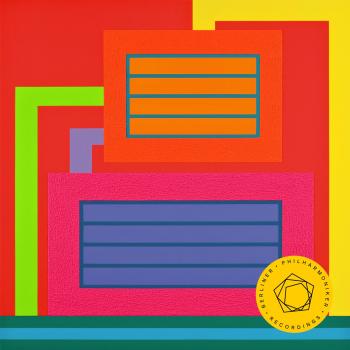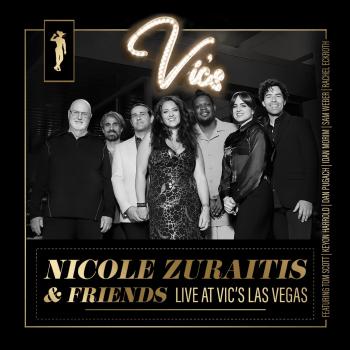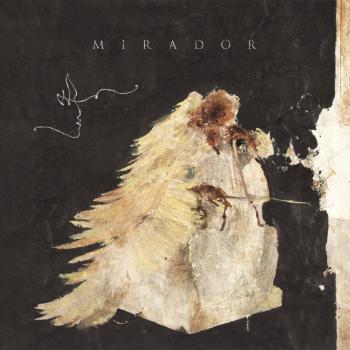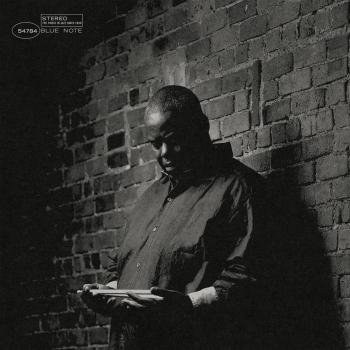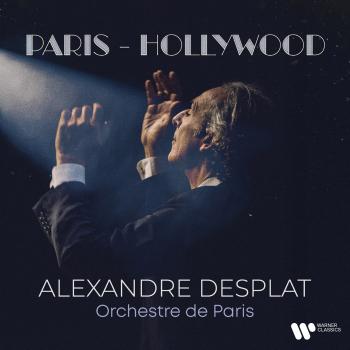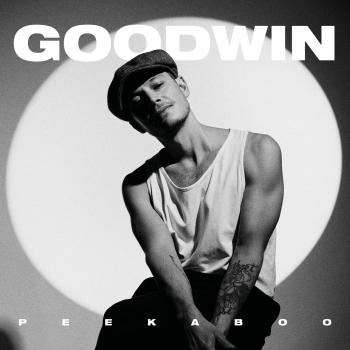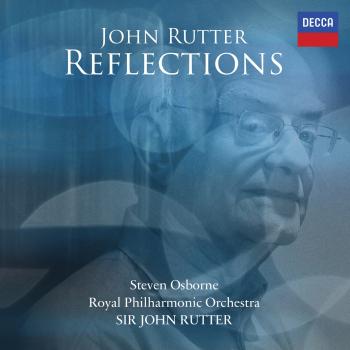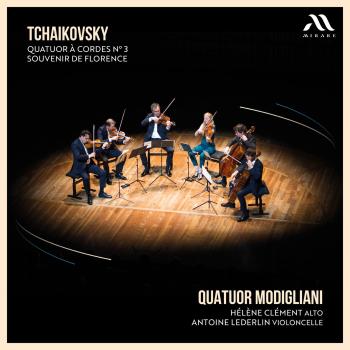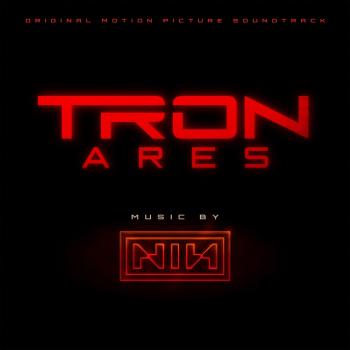
Bach: Sonatas for Flute & Harpsichord Pauliina Fred & Aapo Häkkinen
Album Info
Album Veröffentlichung:
2016
HRA-Veröffentlichung:
10.08.2016
Label: Naxos
Genre: Classical
Subgenre: Chamber Music
Interpret: Pauliina Fred & Aapo Häkkinen
Komponist: Johann Sebastian Bach (1685-1750)
Das Album enthält Albumcover Booklet (PDF)
- 1 I. Andante 08:26
- 2 II. Largo e dolce 03:09
- 3 III. Presto 05:43
- 4 I. Allegro moderato 04:20
- 5 II. Siciliano 02:28
- 6 III. Allegro 02:17
- 7 I. Vivace 04:05
- 8 II. Largo e dolce 03:04
- 9 III. Allegro 04:24
- 10 I. Andante - Presto 01:41
- 11 II. Allegro 02:35
- 12 III. Adagio 01:43
- 13 IV. Menuet I-II 02:49
- 14 I. Adagio ma non tanto 03:10
- 15 II. Allegro 02:52
- 16 III. Andante 03:19
- 17 IV. Allegro 02:39
- 18 I. Adagio ma non tanto 02:21
- 19 II. Allegro 02:32
- 20 III. Siciliano 02:38
- 21 IV. Allegro assai 03:36
Info zu Bach: Sonatas for Flute & Harpsichord
Though the origin of Bach’s sonatas for flute and harpsichord is uncertain there has also been considerable debate about their genre. The first three are often called ‘Sonaten auf Concertenart’—sonatas in concerto style—a hybrid genre that became popular between around 1720 and 1740, so Bach may have been deliberately experimenting with form in these works. The Sonata in E flat major, BWV 1031, with its lovely siciliano, is perhaps the most popular of the flute sonatas, holding a special place in the repertory, but all offer a fascinating insight into Bach’s use of the sonata genre and a wealth of inventive music.
„Did Johann Sebastian Bach really write the six flute sonatas attributed to him after his death? Naxos seem pretty certain, this being their second complete recording. The problem of attribution comes from the fact that no one has been able to establish a date or place of composition of three of the scores, and if they were by Bach, why then did he leave the third sonata incomplete. Put those questions aside and all six sonatas have been gratefully accepted into the flute repertoire, the music largely of a happy disposition, the mercurial finale of the second sonata a particularly bright and brilliant score. Then again there is the question as to why—as works at the time were frequently composed as a series of six scores—did he describe three of them as for ‘Flute and Harpsichord’, and the other three as ‘Flute with Basso Continuo’, the first three being in three movements, and the second group in four? Then just to emphasise that these were not written as a group, the performers use differing copies of period instruments, including a Lute-harpsichord in the Fourth and a Clavichord in the Sixth. The Finnish duo of Pauliina Fred and Aapo Häkkinen are very nimble exponents who produce highly attractive performances, one presuming that the flute copies are authentic to the point that they have retained some questionable tuning that becomes obvious in slow movements. Very well balanced sound, all six sonatas being shoehorned onto the one disc, the previous highly regarded Naxos recording spreading them over two with additional material.“ (David Denton, David's Review Corner)
Pauliina Fred, flute
Aapo Häkkinen, harpsichord, clavichord
Pauliina Fred
is a flute player, through and through. She has specialized in historical flutes and plays various types of whistles from Renaissance recorders to the C flute of the Romantic Era. She has even been seen jamming Bossa nova on a silver flute. Pauliina loves music by Mozart and is inspired by new music played on old-time instruments; she is totally at home with French Baroque music.
Pauliina regularly plays in the Helsinki Baroque Orchestra, the Finnish Baroque Orchestra and the Oslo Baroque Orchestra. She is also a member of the Bravade recorder quartet, the Zetes woodwinds quintet, Bellman Trio and the SAMA Folk Baroque Ensemble.
Pauliina has performed solo and as a chamber and orchestra musician, not merely in Finland, but in other parts of Europe and even the United States of America and Japan. You can hear her play music by Naxos, Aeolus, Pilfink Records and Bis. Pauliina has received her master’s in music from both the Sibelius Academy, in Helsinki, and the Utrecht Conservatory.
Aapo Häkkinen
(1976) began his musical education as a chorister at Helsinki Cathedral. He took up the harpsichord at the age of 13, studying with Elina Mustonen and Olli Porthan (organ) at the Sibelius Academy. From 1995 to 1998 he studied with Bob van Asperen at the Amsterdam Sweelinck Conservatory and from 1996 to 2000 with Pierre Hantaï in Paris. He was also fortunate to enjoy the generous guidance and encouragement of Gustav Leonhardt.
Immediately after obtaining his diploma in 1998, Aapo Häkkinen won second prize and the VRT prize at the Bruges International Harpsichord Competition. He was also awarded the Norddeutscher Rundfunk special prize Musikpreis 1997 for his interpretations of Italian music. Aapo Häkkinen has appeared as soloist in Scandinavia, Holland, Belgium, France, Germany, Austria, Switzerland, England, Ireland, Italy, Spain, Luxembourg, Portugal, Hungary, Estonia, Russia, Poland, Slovenia, Croatia, Slovakia, Bulgaria, Turkey, Israel, the United States, Mexico, Brazil, Japan, Korea, and Vietnam (Festival de La Roque-d'Anthéron, Konzerthaus Berlin, Dresdner Musikfestspiele, Göttinger Händel-Festspiele, Kölner Philharmonie, Rheingau Musik Festival, Bachfest der Neuen Bachgesellschaft, London Lufthansa Festival, Flanders Festival, Bergen Festival, Eszterháza Haydn Festival, Washington Library of Congress, Copenhagen Tivoli Festival, St Petersburg Early Music Festival, Warsaw Philharmonia, Cracow Philharmonia, Forum Musicum Wroclaw, Madrid Auditorio Nacional, Festival de Música Antigua de Sevilla, Culturgest Lisbon, Gulbenkian Música, Musik Meran, Bolzano Festival, Israel Festival, Musashino Cultural Foundation, Hyogo Performing Arts Center, Festival Internacional Cervantino, Festival de Morelia, Kuhmo Chamber Music, Helsinki Festival, Turku Music Festival...)
Aapo Häkkinen is also known as a distinguished chamber musician and director (Musica Aeterna, Orchestra del Teatro Olimpico di Vicenza, Orquestra Metropolitana de Lisboa, Croatian Baroque Ensemble, Tampere Filharmonia, Tapiola Sinfonietta, Ostrobothnian Chamber Orchestra, Chamber Orchestra of Lapland, Jyväskylä Sinfonia, Tirgu Mures Philharmonic Orchestra and Choir, Novosibirsk Philharmonic Chamber Orchestra, Vietnam National Symphony Orchestra, Cork Baroque Orchestra, Tallinn Baroque Orchestra, Eric Ericson Chamber Choir, Helsinki Chamber Choir, Key Ensemble, Tapiola Chamber Choir) in collaboration with artists such as Enrico Baiano, Jay Bernfeld, Reinhard Goebel, Monica Groop, Ilya Grubert, Werner Güra, Pierre Hantaï, Jorma Hynninen, Erich Höbarth, Soile Isokoski, María Cristina Kiehr, Topi Lehtipuu, Julia Lezhneva, Riccardo Minasi, Alexander Rudin, Carolyn Sampson, and Dmitry Sinkovsky. He has conducted Handel's Acis and Galatea (dir. Vilppu Kiljunen) and Haydn's L'Isola disabitata (dir. Johanna Freundlich) for the Finnish Chamber Opera, Carissimi's Jephte (dir. Juha Mustanoja) for Kokkola Opera, Pergolesi's La Serva padrona (dir. Ozren Prohić) for the Croatian National Theatre, Telemann's Pimpinone (dir. Ville Saukkonen) for Rovaniemi Korundi, and Monteverdi's L'Incoronazione di Poppea (dir. Vilppu Kiljunen) for the Finnish National Opera.
Aapo Häkkinen has recorded for the labels Aeolus, Alba, Avie, Cantus, Deux-Elles, and Naxos, and for European radio and television companies such as DLF, MDR, NDR, WDR, BR, SR, SWR, and VRT. A writer and broadcaster about many aspects of the early music world, Häkkinen hosts his own programme on Classic FM in Finland. Besides the harpsichord, he regularly performs on the organ and on the clavichord. He has commissioned, given premières, and recorded music by Lucio Garau, Eero Hämeenniemi, Mário Laginha, Jyrki Linjama, Jukka Tiensuu, and Tapio Tuomela. Aapo Häkkinen has edited a series of 17th century Florentine keyboard music for Ut Orpheus Edizioni. He teaches at the Sibelius Academy and at international masterclasses. He is Artistic Director of the Helsinki Baroque Orchestra and of the Helsinki Music Centre Early Music Series as well as the Janakkala Baroque Festival.
Booklet für Bach: Sonatas for Flute & Harpsichord


